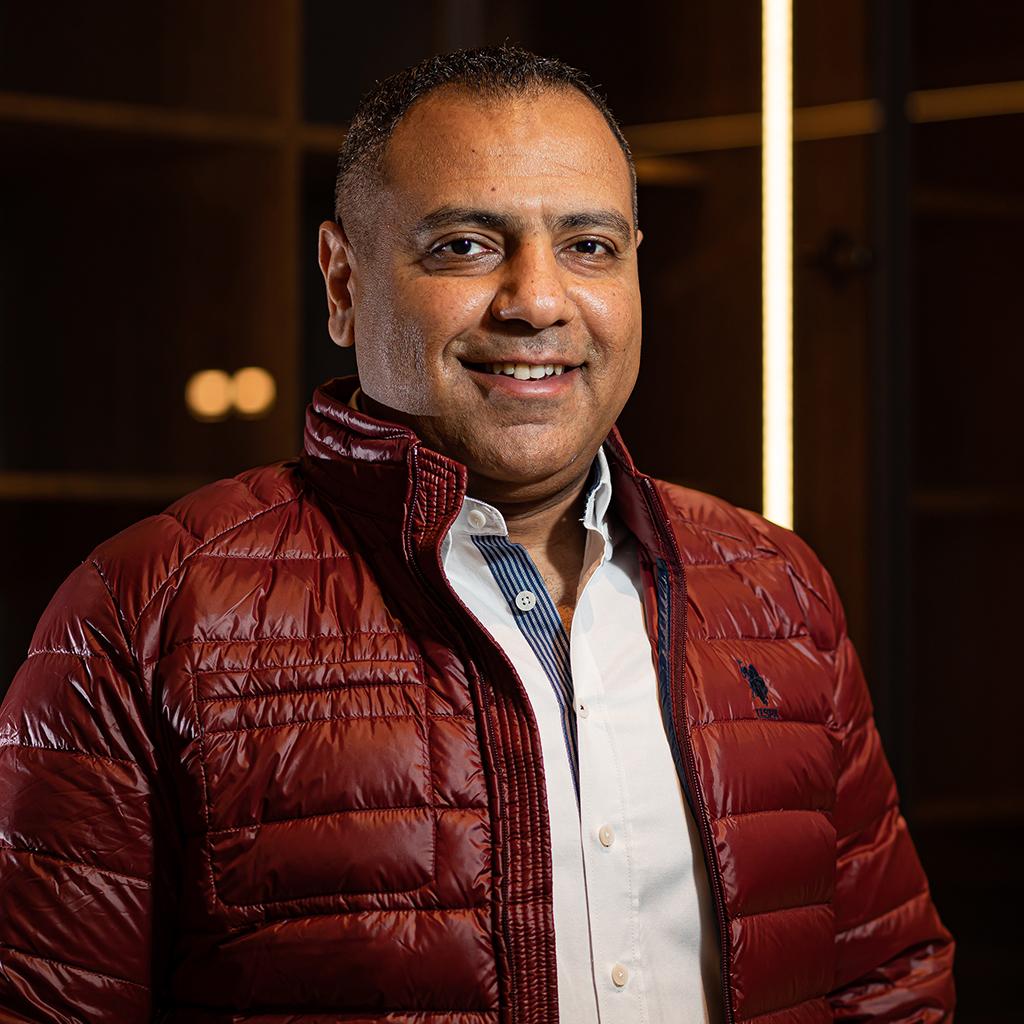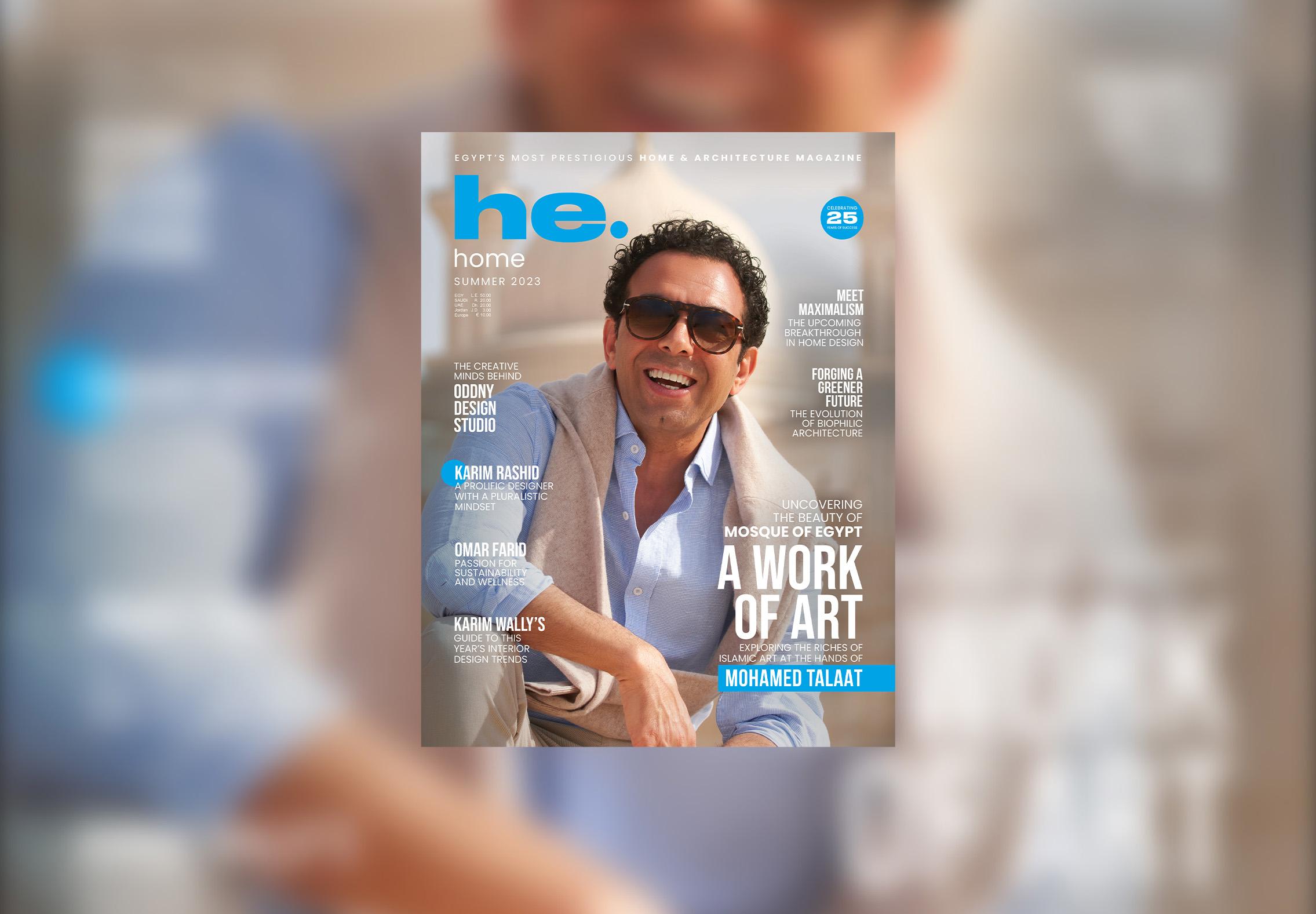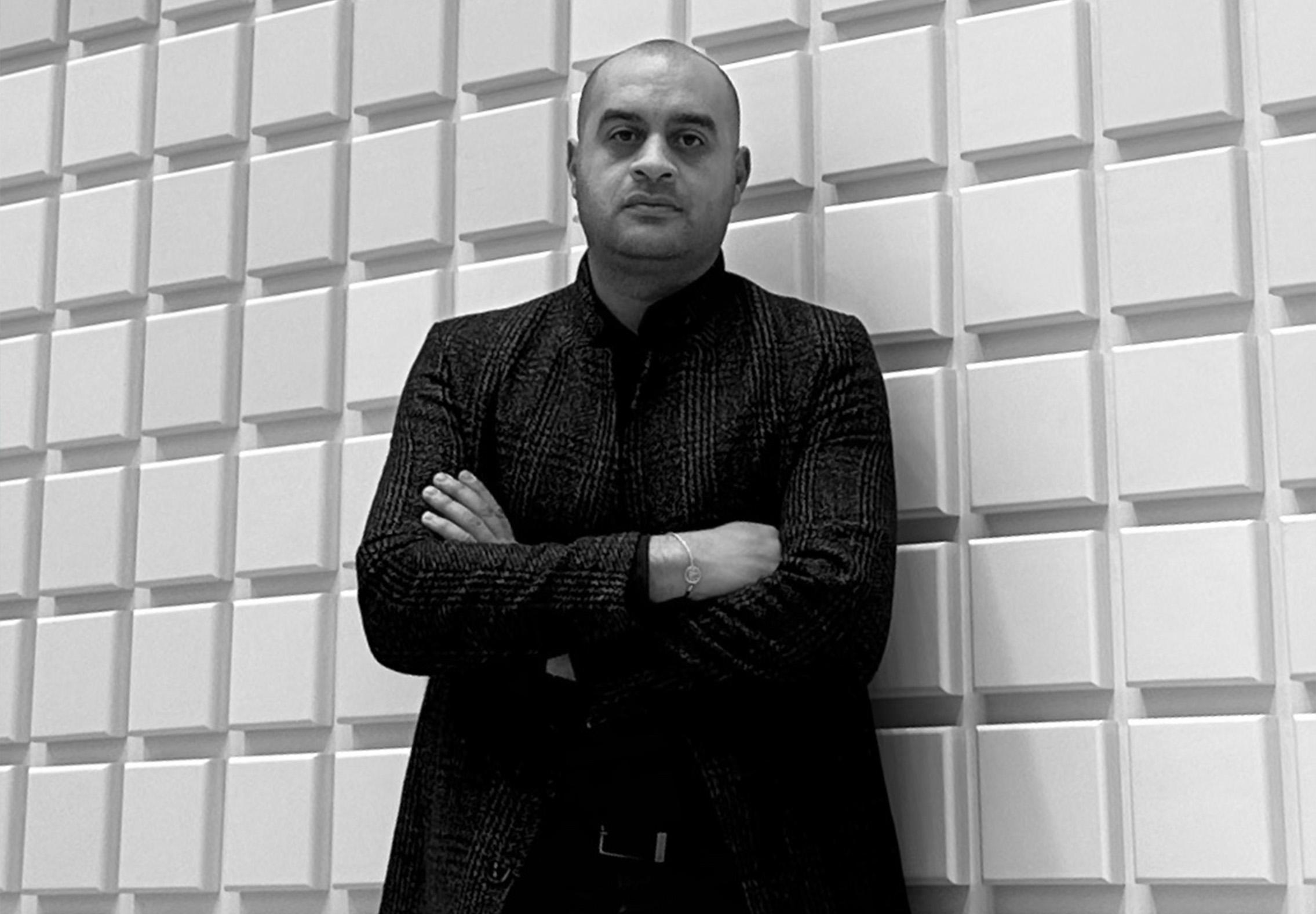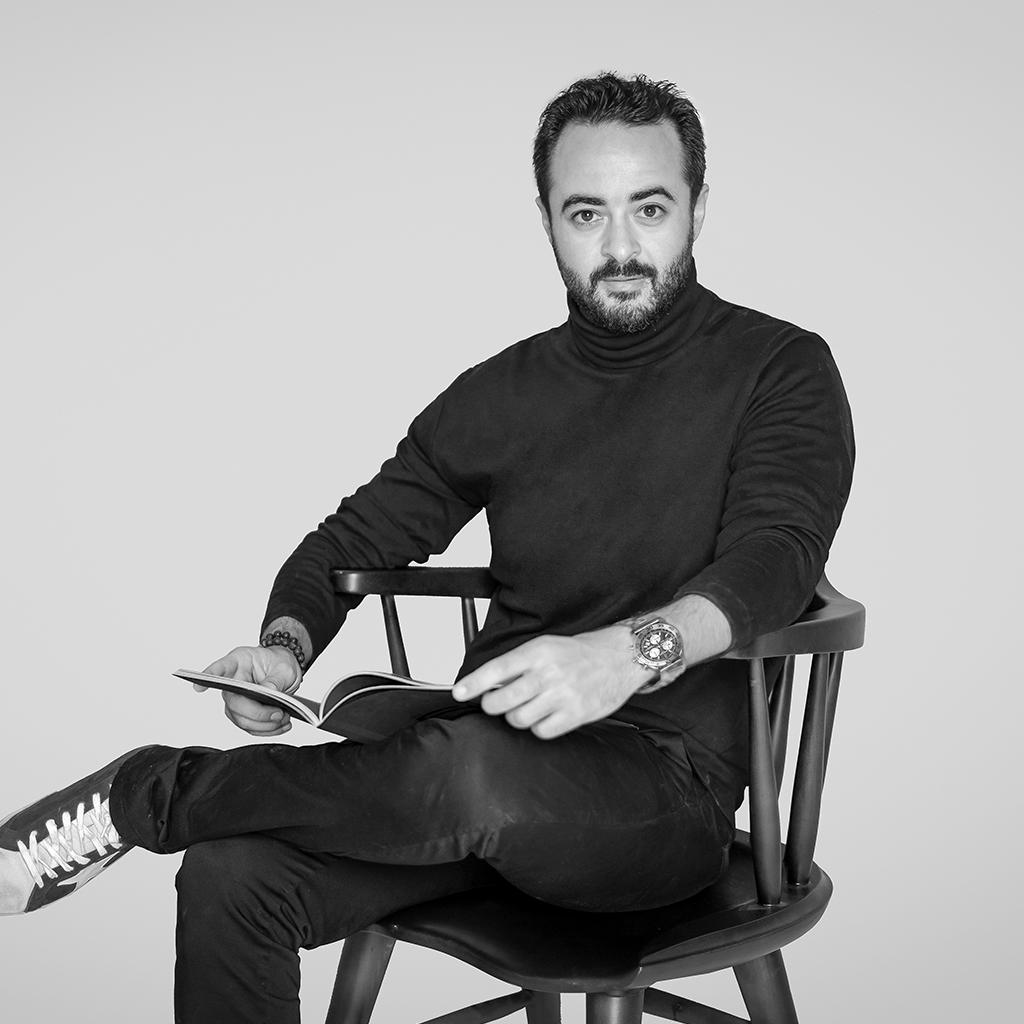
Written by: Yasmeen Ebada
Date: 2021-04-13
Discusses how smart technology and luxurious materials mesh in a project
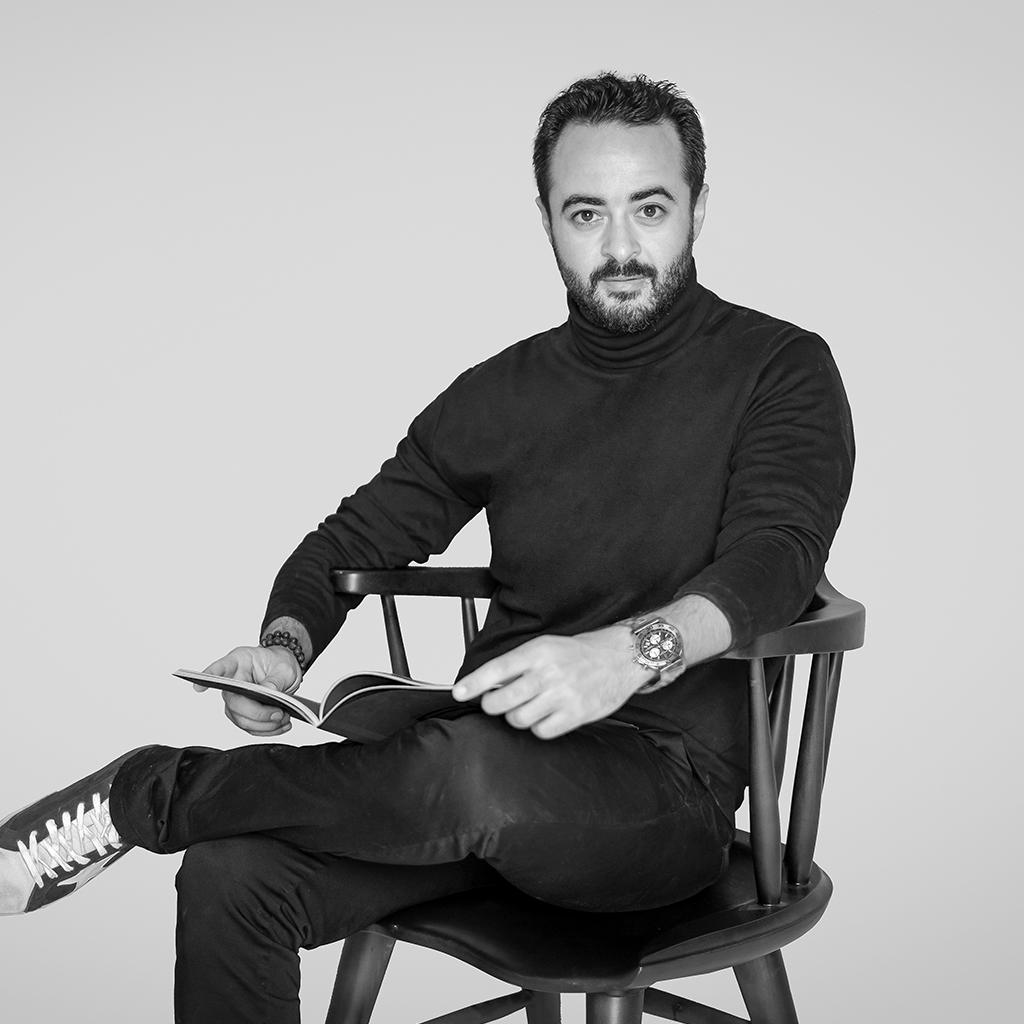
Sherif Ali discusses how smart technology and luxurious materials mesh in a project
Sherif Ali graduated from the department of Applied Arts in 2005. He commenced his interior design career during his freshman year when he initiated his printing plotting center—a layout of engineering projects—which made him realize his ultimate passion for interior design.
Ali studied projects thoroughly before printing them. Seamlessly, he would start creating the project’s layout while adjusting and fixing the parts he believed were executed poorly.
“This was my start. Plotting is what pushed me toward interior design,”he said.
He started working on interior design—keeping a low-key profile—during his first year of college. During his second year, he started learning about the execution phase of the projects, and instantly after graduating, he started his interior design firm, Sherif Ali Designs, and gradually, it started growing. He specializes in modern, contemporary, and industrial interior design styles.
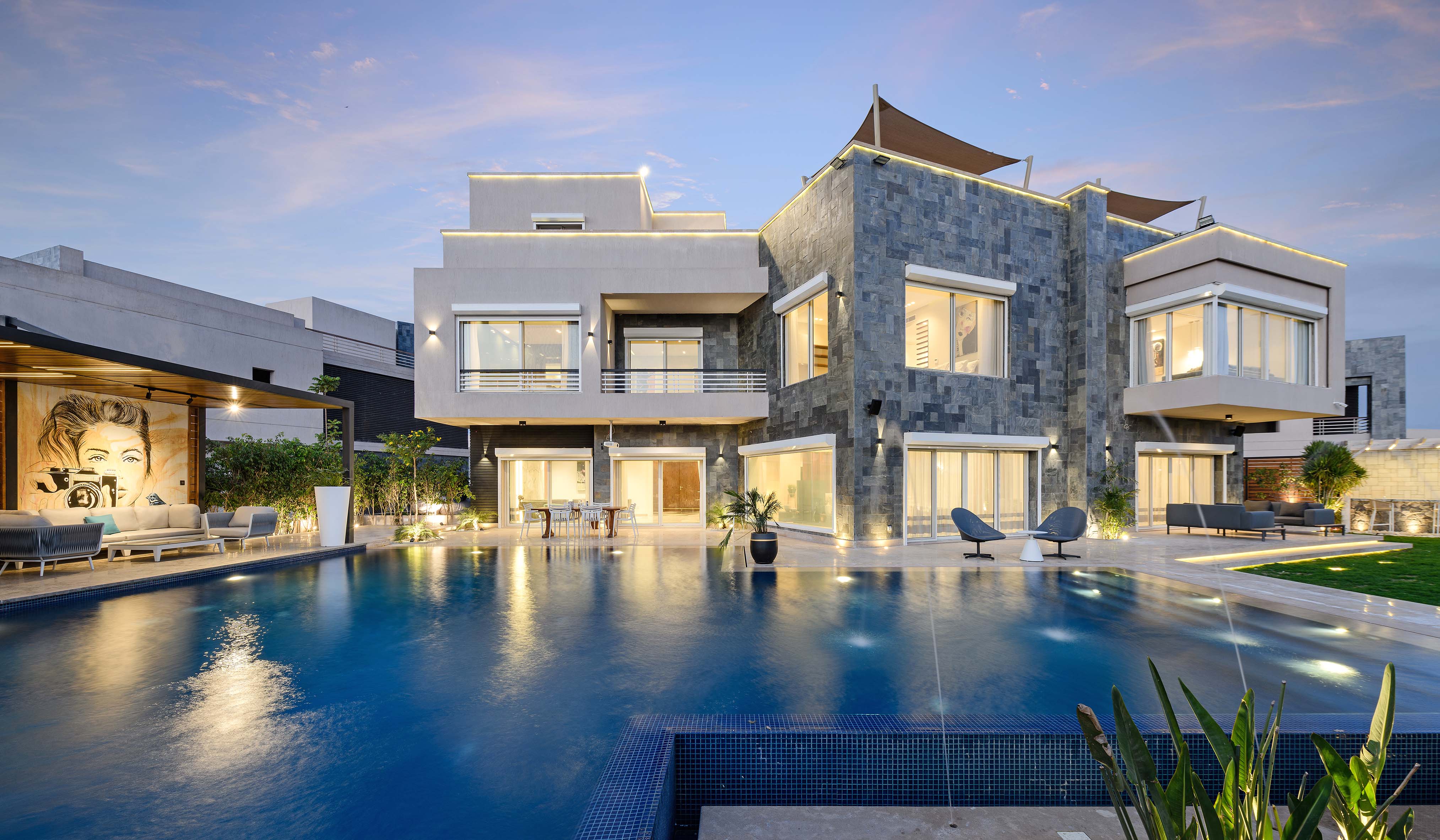
“Nowadays, clients have a better perception and appreciation for interior designers.”
Ali argued that people’s understanding of the interior design field has changed over the past ten years. People used to design their houses by themselves, but now they have started to recognize the difference that an expert can make when designing their dream home. Now, clients have a better understanding and appreciation for interior designers.
“I admit that everyone has a talent in certain things.”
Ali offers modern, contemporary, and industrial interior design services. He does not believe he is an expert in the other styles. “I don’t like classic for example, and therefore, I do not feel like I will execute something strong in that area,”he said. “I see other interior designers who bring out substantial work in this area. I’ll work and grow in what I know I am good at and known for.”
One of his latest projects was working on the interior design and architecture of a residential villa in a private compound in Cairo, Egypt. This house was executed in approximately eight months.
This smart home is operated by an automated system where the residents use a mobile application to operate the entire house from the lighting to the heater, to the TV.

“New technology is changing people’s mindset about interior design, giving architects and designers more value than before.”
The entire interior design and architecture field has progressed. People are more aware of such advancement and are giving more significance to the nature of the industry due to the technological evolution. Smart solutions are highly demanded when building a home, but at the same time, they are not easy to implement without an expert’s guidance. This is when the interior designer and architect come in.“The designer connects all those links together. If you’re going to be spending such a big amount of money, it needs to be done right, and it might as well be worth it in terms of design,” he said.“The designer connects all those links together. If you’re going to be spending such a big amount of money, it needs to be done right, and it might as well be worth it in terms of design,”he said.
All the Italian furniture—Giorgetti, Moroso, Erba, Cattelan Italia, and Missoni Home—in the 1,000-meter house was purchased from the biggest design furniture store in Egypt, Art of Form. Ali wanted to implement all three styles together, adding contemporary, modern, and industrial touches. What encouraged him is the size of the house. The landscape alone is 1,600 meters, so he wanted to make the best out of it. The ground floor follows a contemporary design, the first floor and the roof are modern, and the basement has an industrial area and a modern area that are separated from one another.

“I wanted to implement all three design schools because I didn’t want the residents to get bored,”he said.
This project was executed approximately three months ago. He also changed the entire architecture and the exterior design, including all of the concrete.
“This client saw my previous work and was satisfied with the results; therefore, he gave me the freedom to do what I wanted. I recognized that I could do something different with this house, and the client had a really good budget which allowed me to do so,”he said.
Ali used the best materials and embedded the most eloquent art in the house. The house is flooded with Karim Abd Elmalak paintings, and the bespoke lighting was imported from Serip—one of the most popular Portuguese brands for lighting and tailor-made sculptures in the world.
By the dining room area on the ground floor, Ali built a smart film—switchable glass—on the glass window. The residents could be sitting indoors and still contemplate the paintings that he has drawn specifically to accompany the outdoor swimming pool pergola. The home automation controls are in line. The power switch is used to change the switchable glass from being see-through to completely dark; an option that is mainly used during bedtime.
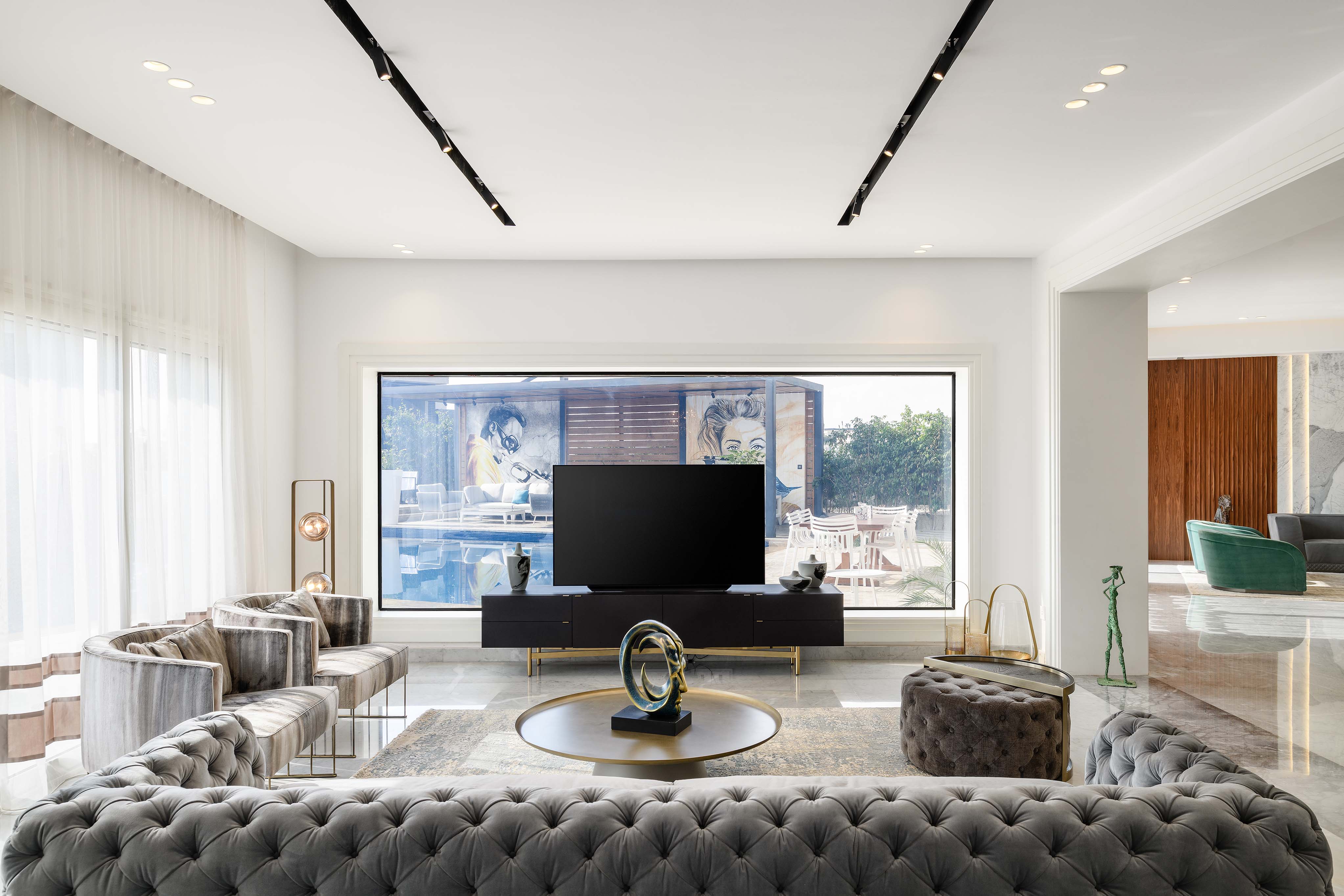
“We have to hear the clients’ needs, but we also have to make the space function smartly.”
He included the latest technologies in all of his designs, including a magic mirror TV. Ali also focused on customization; he did a lot of tailor-made work to reach the desired look and feel of the woodworking, cladding, and outdoor and indoor paintings. The latter were specifically tailored on a gypsum board painted white. All the dressing rooms in the house have folding glass. The roof floor has both, a kitchenette and a small pool. All the curtains are automated. What is astonishing, is that this ‘A class’ six-bedroom house was executed during the pandemic.
“This house was a bit different. It was a challenge. I wanted to work on it in a different way to execute something out of the ordinary. The owner gave me the freedom to do what I wanted, and to be quite frank, when clients do that, creativity really shows in the work,”he said.
Ali wanted to focus mainly on lighting and furniture for this project. Therefore, for the ground floor, he did not want to implement marble variation, and instead, he used Calacatta white Italian marble because it is still rich and has a dominant light color. He could add expensive furniture pieces on that floor without making the space look too crowded. The first floor follows a contemporary design style, as marble fits better with contemporary than wood. He also used marble on the ground floor as it gives a more luxurious sense and is easier to clean than wood. In terms of practicality and comfort, this is more convenient since the ground floor is also the guest floor. He used engineered wood for the rest of the flooring of the house.
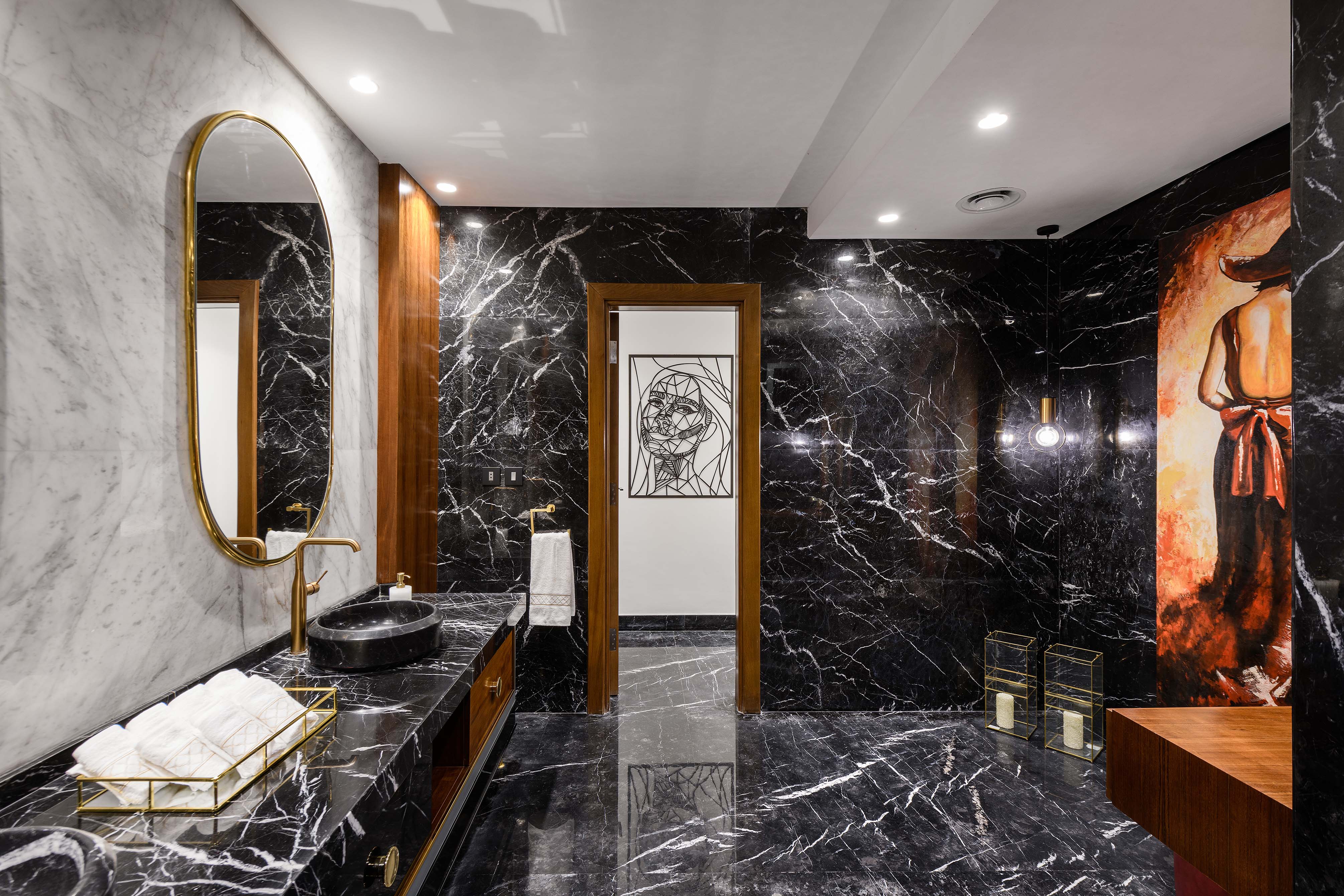
“This is the beauty of a smart home.”
Warmth should be embraced and felt at home, and therefore, Ali implemented wood on the first floor living rooms and the bedrooms. One of the benefits of an automated system is the number of variations a resident could use when they program something in the house.
In addition, he added a sensor leakage system to optimize safety. In case of water leakage or when the water level rises, the sensors provide a power outage. The sensors are located anywhere in the house where there is a water source, including the 11 bathrooms, the kitchen, and kitchenettes.
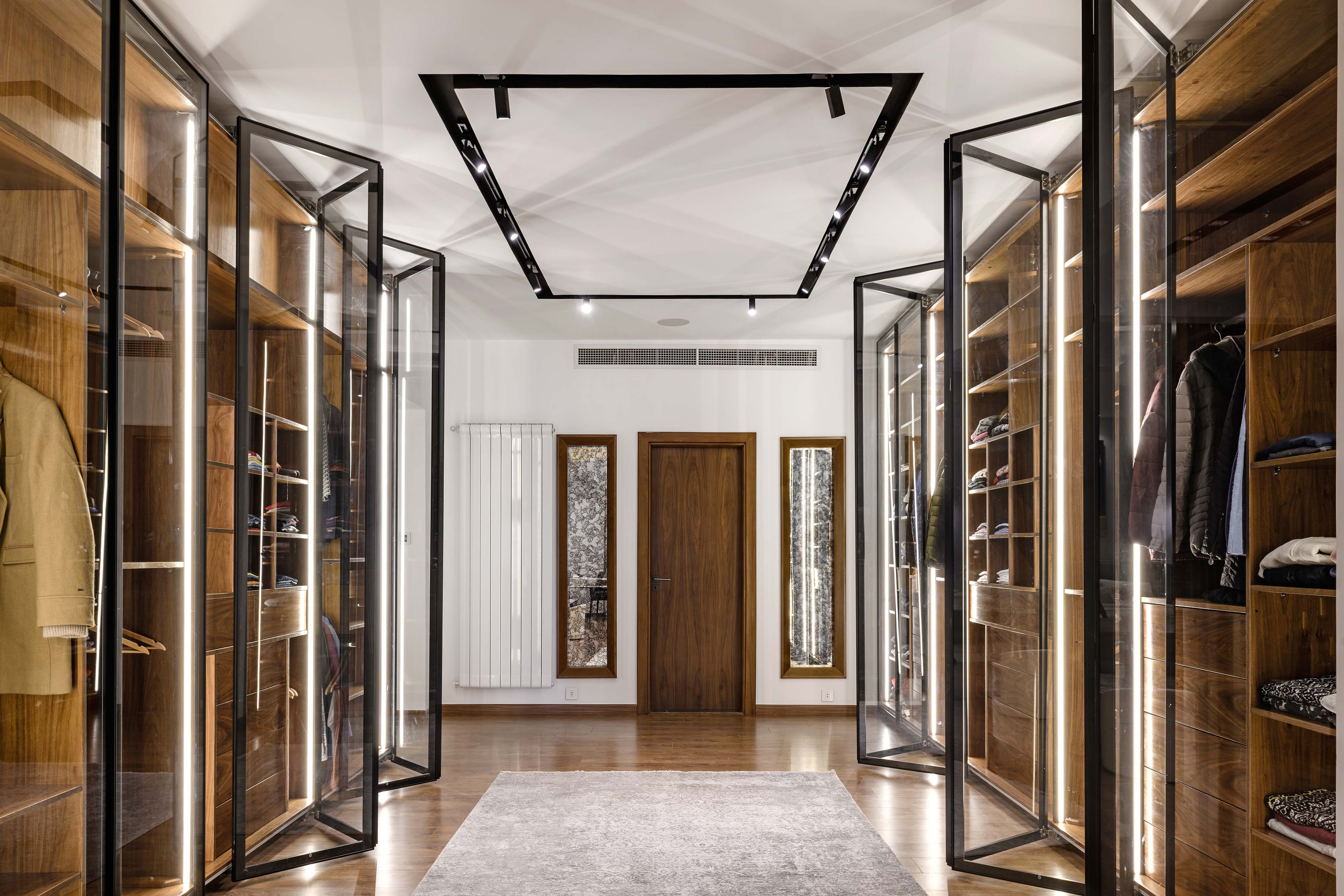
Every corner in the house is covered with adequate lighting outside. He implemented antique marble and LED lighting on the edges, and of course, the lighting is programmed to the automated system. The entire roof is made out of marble, and Ali used engineered wood in the indoor living room of the roof.
In the outdoor dining area, the glass windows act as a projector, as well as a shutter. This adds an extra touch of satisfaction, facilitating the daily simple pleasures. For instance, residents can watch a movie if they are sitting outside. They could also enjoy the sensational view of the pergola and pool while having dinner inside.
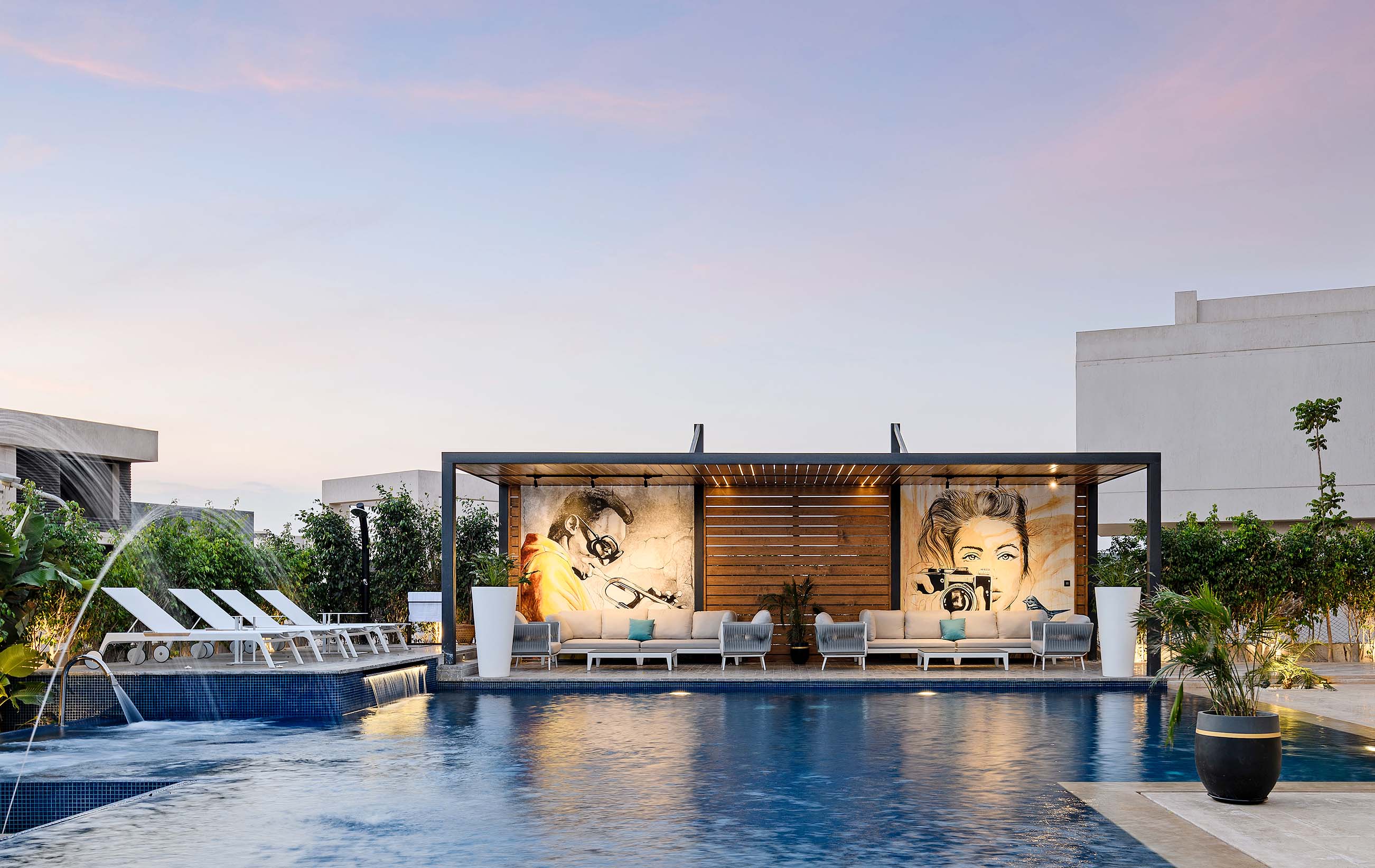
“The trick is not only in choosing high-quality material, but it is in putting it in a suitable place.”
Instead of having to roll fabric wool, the smart film that Ali imported from China does both jobs. For all the doors, Ali used walnut wood, except for the ground kitchen door where he used massive Zan wood with steel for the two sliding doors. He tried to add variation to the roof’s bathroom and give it a beach theme to match the outdoor roof tent, therefore, he used Zan wood to fulfill his vision.
The house comprises natural gas heating—smart system heaters used in Europe—that is also programmed to the automated system.
We live in an era where people are constantly rushing from one place to another. People want their living space to help them become more efficient in this fast-paced world. People do not want to return upstairs to turn off the lights in their bedroom. They want to be able to do that from their phone. Engineers, architects, and interior designers must adjust their work accordingly. A smart home could still be filled will luxurious materials—a concept that Ali has proven.
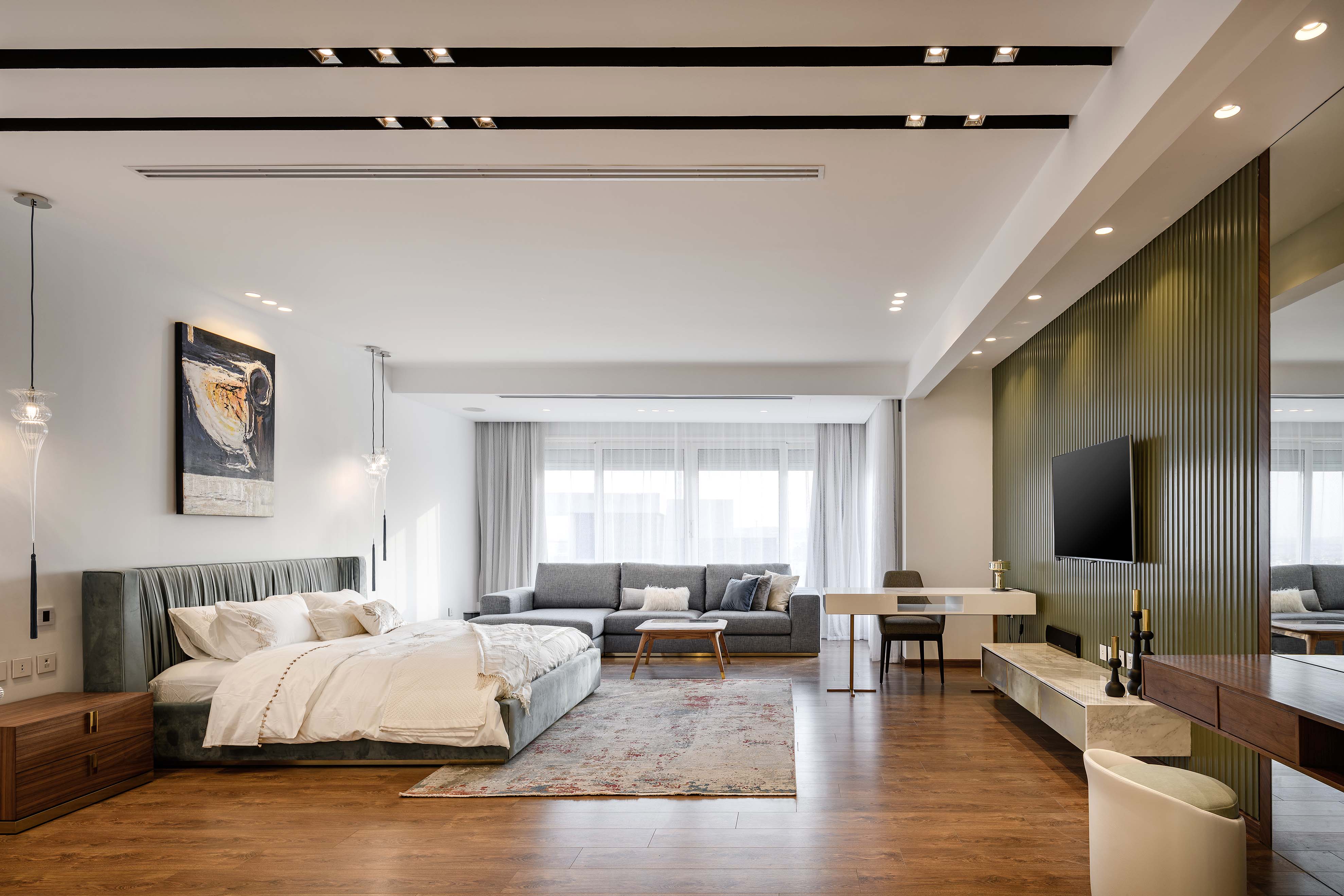
“It is important to recognize that we live in an era where the dependence on technology is very high.”
